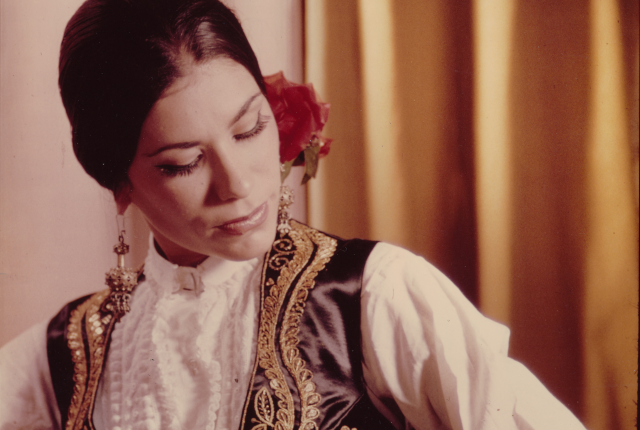LEGENDARY DANCER María Benítez (1942–2024) took flamenco to new heights during her career as a dancer and educator, cementing Santa Fe as a flamenco destination and creating a legacy that lives on in the dancers she trained. Benítez mastered her craft in Spain during the 1960s, before returning to New Mexico and founding one of the most influential flamenco companies and dance schools of the genre. She appeared on stage at the Santa Fe Opera, the New York Metropolitan Opera, and the Dallas Opera, in addition to years of choreographing her own projects.
“She had a profound effect on so many people,” says Jaima Chevalier, who wrote Fringe: María Benítez’s Flamenco Enchantment (Atomic City Lights, 2019). “She danced all over the world for more than seven million people; she danced for the king of Spain. Photographers adored her.” In addition to her expert technique, Benítez was fearless. “She was revolutionary,” Chevalier says.
During a time when women dancers were expected to take the stage in pastel tones and feminine skirts, Benítez wore pants to accentuate her strong muscles and dramatic poses. “She wanted you to see that she could splinter the floor to bits with her shoes,” Chevalier recalls. “She wanted you to see the raw form of the dancer’s body, the raw emotion, the pain, the fire, the passion.”
Her influence lives on. Emi Grimm, known by her stage name La Emi, began dancing with Benítez at age four. Grimm’s company, EmiArteFlamenco, continues the legacy with a summer season in Santa Fe, which starts in August. Also in Santa Fe, El Farol presents the Flamenco Dinner Show on Friday and Saturday nights, while Entreflamenco’s summer season runs from July 2 to August 31.


